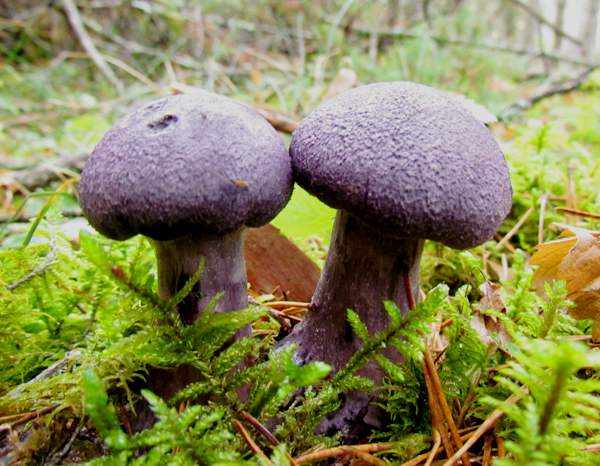

In Australia the species is sufficiently common to have been featured on a postage stamp issued by Australia Post in 1981. It appears to have been introduced to Australia, New Zealand and Iceland. It occurs widely in grasslands and meadows in Europe and North America, from June through to November in the UK. It grows in groups in places which are often unexpected, such as green areas in towns. Coprinopsis atramentaria (the common Ink Cap) is similar, and contains coprine and can induce coprine poisoning, particularly when consumed with alcohol. In America, the 'vomiter' mushroom Chlorophyllum molybdites is responsible for most cases of mushroom poisoning due to its similarity with shaggy mane and other edible mushrooms. The mushroom can sometimes be confused with the magpie fungus which is poisonous. The spore print is black-brown and the spores measure 10–13 by 6.5–8 µm. Microscopically, the mushroom lacks pleurocystidia. The white and fairly thick stipe measures 6–40 cm (2–16 in) high by 1–2.5 cm ( 1⁄ 2–1 in) in diameter and has a loose ring near the bottom.
#BLACK AND WHITE 1 PURPLE MUSHROOMS FREE#
The free gills change rapidly from white to pink, then to black. It is mostly white with shaggy scales, which are more pale brown at the apex. The shaggy ink cap is easily recognizable from its almost cylindrical cap which initially covers most of its stem. Coprinus comatus is the best known of the true Coprinus. However, molecular analysis of DNA sequences showed that the former species belonged in two families, the Agaricaceae and the Psathyrellaceae. This genus was formerly considered to be a large one with well over 100 species. Other common names include lawyer's wig, and shaggy mane.Ĭoprinus comatus is the type species for the genus Coprinus. Its specific name derives from coma, or "hair", hence comatus, "hairy" or "shaggy". The shaggy ink cap was first described by Danish naturalist Otto Friedrich Müller in 1780 as Agaricus comatus, before being given its current binomial name in 1797 by Christiaan Hendrik Persoon. The species is cultivated in China as food. Processing or icing must be done whether for eating or storage within four to six hours of harvest to prevent undesirable changes to the mushroom. Also, placing the mushrooms in a glass of ice water will delay the decomposition for a day or two so that one has time to incorporate them into a meal. If long-term storage is desired, microwaving, sauteing or simmering until limp will allow the mushrooms to be stored in a refrigerator for several days or frozen. When young it is an excellent edible mushroom provided that it is eaten soon after being collected (it keeps very badly because of the autodigestion of its gills and cap). This mushroom is unusual because it will turn black and dissolve itself in a matter of hours after being picked or depositing spores. The gills beneath the cap are white, then pink, then turn black and secrete a black liquid filled with spores (hence the "ink cap" name). The caps are white, and covered with scales-this is the origin of the common names of the fungus. The young fruit bodies first appear as white cylinders emerging from the ground, then the bell-shaped caps open out. Coprinus comatus, the shaggy ink cap, lawyer's wig, or shaggy mane, is a common fungus often seen growing on lawns, along gravel roads and waste areas.


 0 kommentar(er)
0 kommentar(er)
